Every company in the world has experienced customer churn at some point.
And every company responds to it in a different way: some quickly begin hunting for new clients to make up for the lost business, while others focus all of their resources on figuring out what went wrong and how to stop additional clients from trying to go.
Customer churn, or the quantity of consumers who leave a business within a specific time frame, is what this issue is known as. Let’s talk about that.
Did you find this video helpful? Let us know by dropping a comment below!
To learn more about our Cloud Support Service, or schedule an IT Systems Check, contact itGenius - the Google Workspace Experts
What is customer churn?
Customer churn, commonly referred to as customer attrition, counts the number of people that decide not to use your product or service during a predetermined time frame. This is known as your customer turnover rate or customer attrition rate when it is expressed as a percentage of your entire client base.
Customer churn can come in a variety of shapes and sizes, depending on your business strategy. Customer churn, which is measured for subscription-based businesses, is the proportion of consumers who have decided to cancel their subscriptions.
Churned consumers represent a sizable amount of lost revenue, which is a serious issue for brands and merchants. You can attempt to reduce churn and raise customer lifetime value by making an effort to comprehend the reasons why consumers leave your business and identifying at-risk clients.
What are the common causes of customer churn?
Although each customer's reasons for leaving can be specific and one-of-a-kind, they typically fall into one of the following groups:
- Price – Customers can churn if they discover a more affordable solution to the issue they're trying to solve. For this reason, it's crucial to establish value and customer onboarding
- Market/Product Fit – Customer turnover is frequently caused by poor product/market fit, which highlights the necessity for close sales and customer service alignment
- User Experience – Buggy, glitchy, or difficult to use software may cause customers to churn.
- Customer Experience – Customers like to feel welcomed and appreciated by the communities they support, so if they don't enjoy doing business with you, they won't want to stay.
How to Reduce Customer Churn
1. Analyze why customer churn occurs
There are three quick approaches to figure out why your organization is experiencing churn.
- Send an exit survey to a consumer.
- Call the client.
- Send a customized email.
The best course of action among these three is to call the customer. Calling a dissatisfied customer shows that you genuinely care about them.
Ask only pertinent questions. Ask them why they left when you call. Their responses will be very helpful in assisting you in determining what went wrong and how to set things right. Consider using surveys to get feedback from your customers as well.
2. Regularly ask for customer feedback
Find out what makes your consumers happy by asking them for comments. Once you've found it, pursue it relentlessly. That is how you develop a base of devoted clients.
They will be more likely to provide you with more feedback if you respond to their reviews with a personalized email.
Regardless of the type of feedback, always show thanks and respect when responding to questions or reviews from customers.
3. Identify inactive customers
Prior to churning, a crucial stage is reached when clients become inactive.
Customers who haven't made a purchase from you in a while or who decided to cancel their subscriptions early are considered inactive. They are on the verge of completely disappearing from view since they no longer respond to your marketing efforts.
However, the difference between inactive consumers and lost customers is that you have a chance to bring them back with the correct interaction. You may lower customer churn and raise customer satisfaction with your product or service by identifying consumers who are likely to leave.
Reengaging at-risk clients can be done in a variety of ways. SaaS providers can utilize in-app messages to promote new tools or features that users haven't yet discovered, or they might provide consumers with the option to reactivate their membership at a significant discount. Retailers should make an attempt to follow up with customers after the sales cycle has completed, for example by emailing them with product recommendations.
4. Know your weaknesses
You may identify the strengths and shortcomings of your company by looking over the comments left by clients. Pay attention to the grievances that your clients raise. This will assist in exposing potential more serious issues with your items.
Once you’ve recognized them, you can get started on implementing the necessary improvements. To improve your product and keep customers, work to resolve any difficulties brought up by them.
5. Create a simple onboarding process
The sign-up process is when a consumer will first interact with your product or service. As a result, this procedure must be made as straightforward as feasible. Make it a goal to take steps to simplify your onboarding process if it's convoluted or burdensome.
If you don't, potential clients might be discouraged from signing up and/or decide to use another SaaS provider instead. Think about including a clear progress indicator so they can see how far they've come already.
6. Reward your customers
Rewards like discounts or free upgrades might encourage customers to renew their contracts by making them feel appreciated.
Additionally, it may inspire them to recommend you to others. Giving your consumers a reward doesn't have to be expensive. A brief note written by hand would do.
7. Go above and beyond
By going above and above for your loyal consumers, you can significantly lower your churn rate. Send them a personalized email to express your gratitude, or offer them special discounts or incentives. You could also get in touch with dissatisfied clients and present incentives.
8. Offer long-term contracts to customers
Make longer-term subscription packages rather than month-to-month agreements. Possibly for six months, a year, or longer.
Offer a discount on long-term contracts. Using this strategy will provide your clients the opportunity to use the goods or services and observe firsthand the advantages it offers to them and their company while saving money.
As a result, once they start to benefit, they will unquestionably stay for the long run.
9. Market your product properly
You can use social media effectively to sell your company.
Spend time educating people on what you have to offer, why it's the greatest option, and how using it will benefit them.
Informing your current clients of what's happening behind the scenes can help them remember your value. Add a new feature, please. Is your product getting an upgrade any time soon? Notify them!
10. Offer appropriate pricing options
You run the danger of permanently losing your clients if your products are too expensive.
However, if it's too low, people can question the quality of your offering. Make sure your product is priced fairly to avoid charging customers more than they are prepared to spend. Pricing your products competitively can aid in reducing turnover.
Conclusion
The most you can do is minimize customer churn to a minimum because it is unavoidable. Fortunately, you have a lot of options for increasing customer retention and lowering churn.
More like this
To learn more about our Cloud Support Service, or schedule an IT Systems Check, contact itGenius - the Google Workspace Experts




